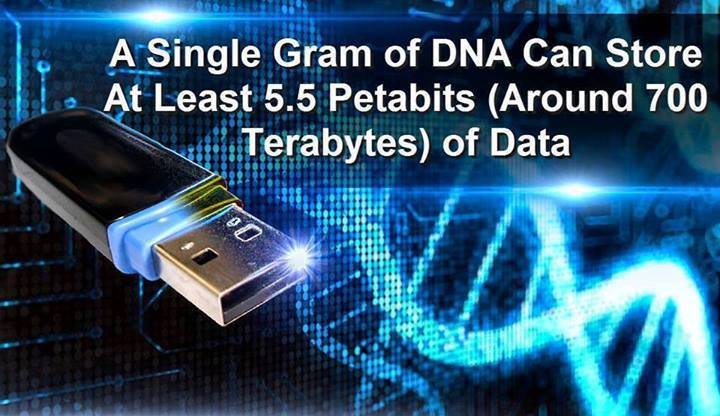Data in this world is increasing exponentially. Putting it into perspective, between 2010 and 2018 we created 30ZB of data (span of 8 years) and by 2025 we will have an additional forecasted amount of 130ZB (span of 7 years) of data created (see figure 1) (International Data Corporation, 2017). Up until now, data creation was mainly originated from the rise in personal computers and mobile phones, as well as the assimilation of digital entertainment. Towards the future, data creation will start to be dominated by embedded devices and IoT (Internet of Things). The rise in machine to machine devices (e.g. wearables, medical implants, security cameras) will collect a vast amount of data in the future. The rise in these devices will increase the amount of interactions between humans and machines, see figure 2 for a representation of the amount of interaction per day.


Storing all this data will be extremely problematic and expensive. Current methods of storing data in HDDs and SSDs just would not be possible. Like all best inventions, scientists have taken inspiration from nature and found a way to store data in our DNA (Using a method called CRISPR – Clustered Regularly Interspaced Short Palindromic Repeats system) (Levien, 2017). The potential of storing data in DNAs is ideal because an extreme amount of data can be stored in such a small size and it can last for thousands of years with no damage. In fact, so much data can be stored per unit volume that roughly a hundred industrial data centers worth of data can be stored in DNA storage the size of a shoe box (Templeton, 2016). If DNA storage is such a big deal, why don’t we still use traditional hard drives? The answer to this question lies in the problem of the cost of reading and writing data into a DNA. The cost of sequencing DNA have decreased significantly over the last years but still far too expensive for economical use. Currently, companies like Twist Bioscience offers a price of 7 to 9 cents per base, translates to roughly $100,000 to store a one-minute high quality sound (Molteni, 2018). Until we have found a better method this reality may not yet be achieved.
Below are some examples of data that was stored inside an E.coli cell (Ledford, 2017).


Soon enough, we will be able to store all your computer data within a tree in our backyard. The seeds of the fruits that fall from this tree will grow new trees and even after 100 cycles of regrowth the DNA will still be the same.
References
Data Age 2025: The Evolution of Data to Life-Critical Don’t Focus on Big Data; Focus on the Data That’s Big. (2017). [ebook] International Data Corporation (IDC). Available at: https://www.seagate.com/www-content/our-story/trends/files/Seagate-WP-DataAge2025-March-2017.pdf [Accessed 7 Oct. 2018].
Ledford, H. (2017). Lights, camera, CRISPR: Biologists use gene editing to store movies in DNA. [online] Nature.com. Available at: https://www.nature.com/news/lights-camera-crispr-biologists-use-gene-editing-to-store-movies-in-dna-1.22288 [Accessed 7 Oct. 2018].
Levien, S. (2017). The CRISPR Files: DNA Data Storage – The Scientific Student. [online] The Scientific Student. Available at: http://www.thescientificstudent.com/crispr-files-dna-data-storage/ [Accessed 7 Oct. 2018].
Molteni, M. (2018). The Rise of DNA Data Storage. [online] WIRED. Available at: https://www.wired.com/story/the-rise-of-dna-data-storage/ [Accessed 7 Oct. 2018].
Templeton, G. (2016). How DNA data storage works – ExtremeTech. [online] ExtremeTech. Available at: https://www.extremetech.com/extreme/231343-how-dna-data-storage-works-as-scientists-create-the-first-dna-ram [Accessed 7 Oct. 2018].

